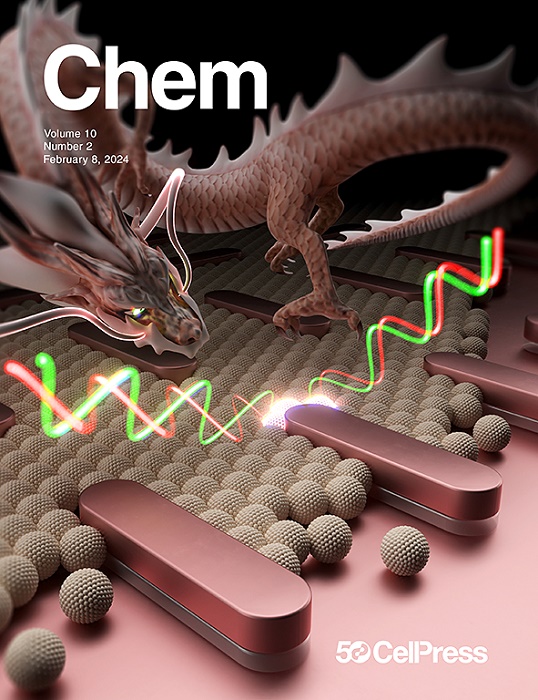ecCO2RR气体扩散电极三相边界CO生成的可视化
IF 19.6
1区 化学
Q1 CHEMISTRY, MULTIDISCIPLINARY
引用次数: 0
摘要
电化学二氧化碳还原技术是一种很有前途的技术,可以减轻温室气体排放的影响,特别是二氧化碳的排放。气体扩散电极(GDEs)广泛应用于该工艺。尽管各种催化剂已经成功地在小尺度上证明了二氧化碳的还原作用,但人们对催化剂层湿润状态在gde中的作用仍然知之甚少。这一因素显著影响电流密度和法拉第效率。然而,两个基本问题仍然存在:在电极内的什么地方发生所需的反应,以及应该以什么样的工作状态为目标来优化性能?在这项研究中,我们使用微流控电解槽来可视化和选择性地识别产生所需产物CO的反应区域。这种方法能够表征电极不同状态的反应性,揭示催化剂层润湿对产物选择性的影响。结合我们之前对gde的研究,这些发现提供了对电化学CO2还原的全面理解。本文章由计算机程序翻译,如有差异,请以英文原文为准。

Visualization of CO formation at the triple-phase boundary in gas diffusion electrodes for ecCO2RR
Electrochemical CO2 reduction represents a promising technology for mitigating the impact of greenhouse gas emissions, particularly CO2. Gas diffusion electrodes (GDEs) are widely utilized in this process. Although CO2 reduction has been successfully demonstrated on small scales with various catalysts, the role of the wetting state of the catalyst layer in GDEs remains poorly understood. This factor significantly influences current density and faradaic efficiency. However, two fundamental questions persist: where within the electrode does the desired reaction occur, and what operating state should be targeted for optimizing performance? In this study, we employ a microfluidic electrolyzer to visualize and selectively identify reaction zones producing CO, the desired product. This approach enables the characterization of reactivity across different states of the electrode, revealing the impact of catalyst-layer wetting on product selectivity. Together with our previous research on GDEs, these findings provide a comprehensive understanding of electrochemical CO2 reduction.
求助全文
通过发布文献求助,成功后即可免费获取论文全文。
去求助
来源期刊

Chem
Environmental Science-Environmental Chemistry
CiteScore
32.40
自引率
1.30%
发文量
281
期刊介绍:
Chem, affiliated with Cell as its sister journal, serves as a platform for groundbreaking research and illustrates how fundamental inquiries in chemistry and its related fields can contribute to addressing future global challenges. It was established in 2016, and is currently edited by Robert Eagling.
 求助内容:
求助内容: 应助结果提醒方式:
应助结果提醒方式:


